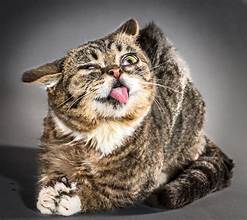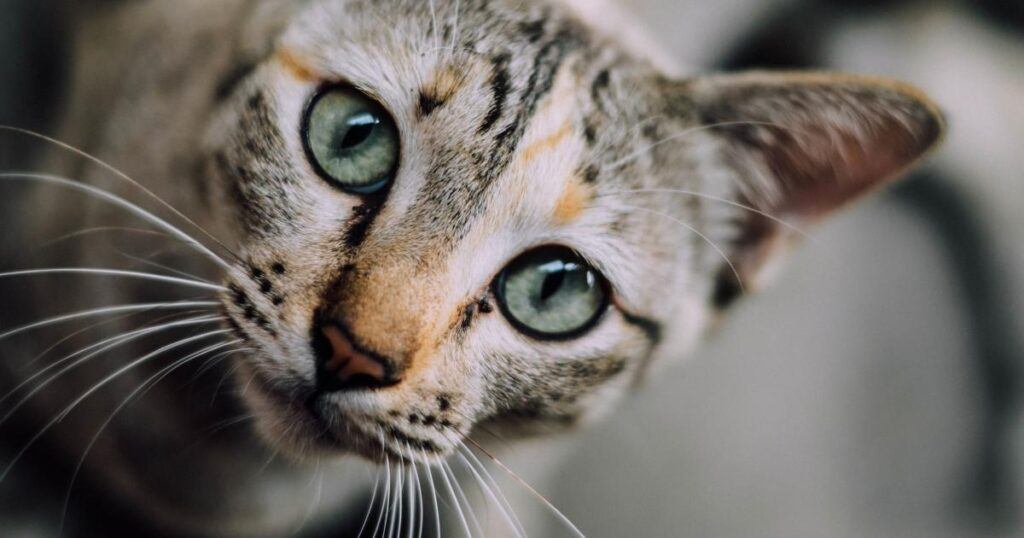
How proficient are you at reading your cat’s facial expressions? If you can excel at this skill, you will add a great deal to your ability to communicate with your four-legged friend effectively. Grasping these facial clues can deepen your connection with your cat and enhance daily interactions.
It is believed that the large number of distinct facial expressions a cat might have may have evolved over their 10,000 years of history cohabitating with humans. Their range of sneers, smiles, and grimaces may in part come from their observations of our expressions.
Recent Study On Cat’s Facial Expressions
A recent study published in Behavioural Processes covered this topic of feline facial expressions. Their information came from the findings of Lauren Scott, a UCLA student, in 2021. The university’s location, minutes from the CatCafe Lounge, presented a prime place for Lauren’s study.
Here, a large group of cats lived together and interacted with each other. Lauren video recorded 194 minutes of cats’ facial expressions in the evening after the cafe had closed for the day. Her video targeted how they responded to each other.
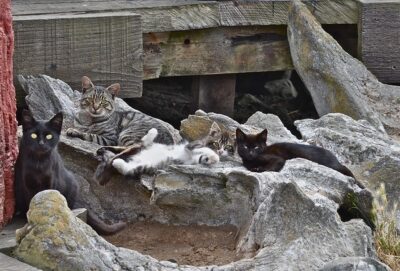
Regardless of the notion some have, cats are not a nonsocial species. Often they form friendships with other cats either at home or in their neighborhood. Sometimes feral cats can live in colonies of thousands, and as in Japan, for example, sometimes they can take over an entire island.
After Lauren made her video, she and another student, Brittany Florkiewicz, also a UCLA student, coded the facial muscle movement. The two discovered a total of 276 distinct facial expressions made toward other cats. Each expression combined about 4 of 25 facial movements. These 25 compare to 44 unique facial movements for humans.
In their study, they found that the majority of the expressions were distinctly friendly, though aggressive expressions were also seen. These facial expressions were enhanced by the type of eye contact, position of whiskers, movements of ears, and tail positions.
Watch Eyes, Ears, And Mouth For Strongest Clues
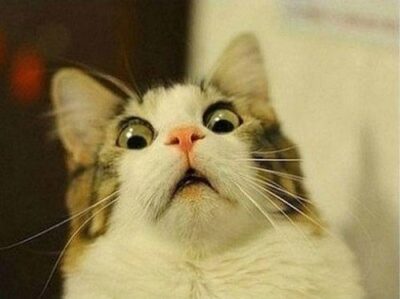
The eyes, ears, and mouth give the strongest clues when it comes to reading a cat’s face. For example, a slow blink from a feline translates as a way of saying they trust you. On the other hand, wide, unblinking eyes, might mean they feel a bit stressed or anxious.
Even the position of the whiskers play a part in a cat’s facial expression. When kitty relaxes, the whiskers are in a neutral position. A startled or agitated cat will pull those whiskers back against the face. Forward-facing whiskers can signal curiosity or excitement.

Even a cat’s mouth can speak volumes, even though not spoken in a human language. Watching how they open their mouth during yawns or when they expose their teeth can signify different emotions, from peacefulness to agitation. Vocalizations, though not visible, can reinforce the cat’s facial expression. We cat parents have all heard the high-pitched meow that registers excitement or a desire for attention. Asking for food will elicit a similar response.
The Emotional Spectrum: What Your Cat’s Face Tells You
These facial expressions help us understand the cat’s emotional state. A relaxed cat with half-closed eyes feels safe and at ease with their environment. It’s a kitty version of lounging on a hammock with a cool drink in hand. At the other end of the spectrum, if the eyes are darting around, kitty signals alertness or worry.

Facial muscles will affect the expression shown. For example, when a cat’s face appears tense, with whiskers pushed forward, there might be something that’s caught their serious attention, maybe a pesky fly or a new sound in the house.
Cats have their very own way of showing affection, often with attentive eye contact or gently nudging their face against yours. These are strong indications of trust, highlighting the bond you share. It’s their way of including you in their inner circle.
Recognizing discomfort through facial signs is crucial. A tightly closed mouth or squinting eyes might mean they’re in pain or something is off in their environment. Addressing these signs promptly can prevent additional stress or health issues.
Enhancing Bond Through Observation: Learning the Language of Cats
Understanding your cat’s facial expressions isn’t just about understanding their moods; it’s a tool to deepen the bond between you and your furry companion. Being attuned to their expressions helps you respond better to their needs, making them feel more secure and loved.
Cats can be quite reserved, but learning to read their faces can transform your relationship. For example, when you notice a moment of trust—like a slow blink—reciprocate. It’s a way of telling your cat you’re on the same page, amplifying mutual respect.
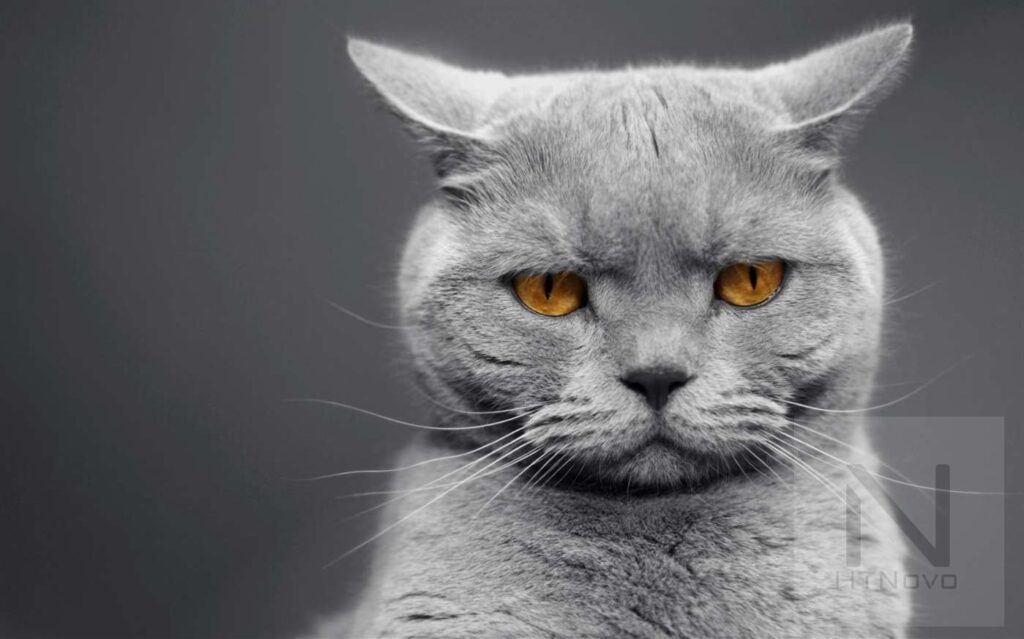
Interpretation is just the beginning, though. Once you recognize the signs, use them to adjust your actions. If you see signs of anxiety, such as wide-open eyes and tense ears, maybe it’s time to provide a quiet, safe space or engage them in a calming activity.
Understanding this silent communication streamlines care. From discerning when they’re hungry to when they need a bit of alone time, it builds a relationship where needs are met more intuitively. Such awareness also enriches your interactions and can make your time together more enjoyable.
Helping other family members or friends understand these expressions can create a more harmonious household. Each person who interacts with your cat can learn these cues, allowing the cat’s needs to be consistently met.
References I used for this post:
https://www.science.org/content/article/cats-have-nearly-300-facial-expressions
https://tica.org/blogs/cracking-the-code-how-cats-communicate-with-humans-through-visual-and-facial-cues/
https://www.usatoday.com/story/news/nation/2023/11/02/cats-communicate-276-facial-expressions-study/71425297007

